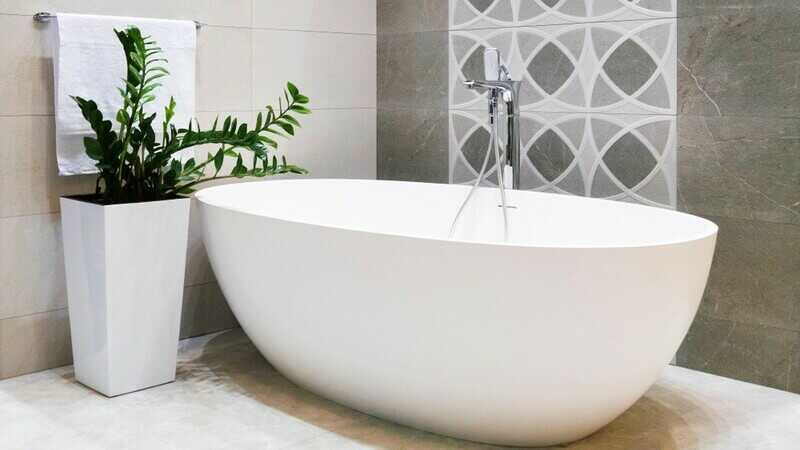Important Things You Should Know About Small Freestanding Bathtub Australia

A small freestanding bathtub Australia is a great choice if you want to make a strong statement with your bathroom renovation.
Freestanding bathtubs are sculptural and elegant fixtures that effortlessly grab attention. They’re also fantastic if you enjoy unwinding with a glass of wine in the tub after a demanding day.
But first, make sure you’ve thought about your new tub from every possible angle before pouring the bubble bath and reaching for the corkscrew.
The Basics:
Freestanding bathtubs aren’t attached to a deck or surround tub and stand alone on the bathroom floor. Instead, a freestanding tub can be positioned wherever you desire in the space.
Even with a larger tub, you can give the appearance of additional space in your bathroom by selecting a clawfoot tub or another kind with an open bottom. A smaller tub, like a Japanese soaking tub, can also help you conserve room.
The smallest freestanding tubs are 43 inches long, and the largest is 78 inches long. So you have plenty of room for these freestanding behemoths if you prefer to stretch out and want a tub covering your knees and chest.
A freestanding tub can technically be moved after installation, although doing so is difficult. Freestanding bathtubs need plumbing accessories, which may be more difficult to relocate than the bathtub itself. Therefore, you shouldn’t think of a freestanding bathtub as being movable.
The Material:

The same components are used to construct contemporary freestanding bathtubs and their built-in relatives. As a result, acrylic bathtubs are portable, strong, and simple to maintain.
The use of solid surface materials is also very common. They come in a matte or gloss surface, are long-lasting, and are easy to clean. In addition, overflow drains that are installed into solid surface bathtubs are a common feature that can help you conceal some plumbing.
Traditional cast iron bathtubs are also widely accessible, but remember that they require a sturdy floor because they are fairly heavy. A copper tub is another option, and many of them are gorgeous.
Because copper is naturally resistant to mold and bacteria, copper bathtubs are also useful. A stone tub is another option, although these are very heavy. Additionally, stainless steel tubes are available, which have a highly contemporary appearance and require very little upkeep.
Why Prefer a Freestanding Bathtub?
The beauty of freestanding baths is just one of many advantages they offer. Larger models than typical built-ins can also offer much more space for relaxing.
Since there aren’t any grooves, corners, or grout lines you would see on a tub surround, they are also a little bit simpler to clean than built-in bathtubs. The entire tub’s exterior and the area of the exposed floor beneath must be cleaned, though. Also, since you are not required to maintain a freestanding tub pressed against a wall, you have much more flexibility regarding tub placement.
Even freestanding corner tubs allow you to fold the tub away to free up floor space. Finally, you should be aware that jetted freestanding tubs are accessible if soaking isn’t enough to relax. These allow you to target aching muscles or have a whirlpool bath.

